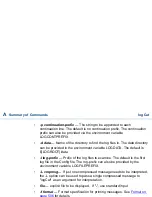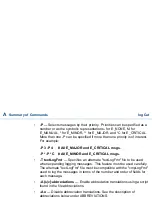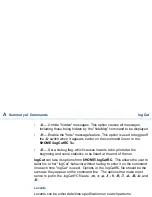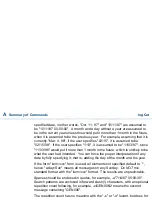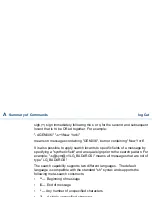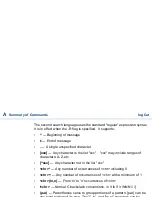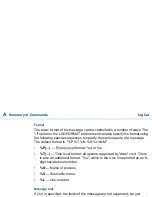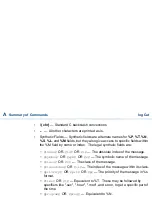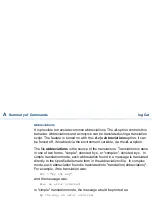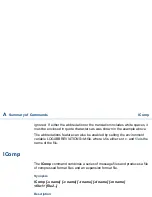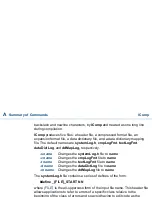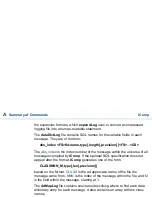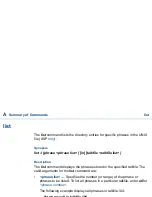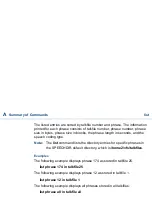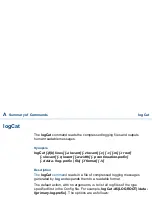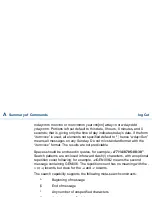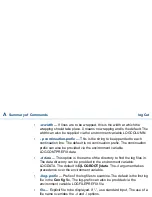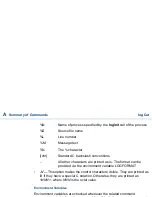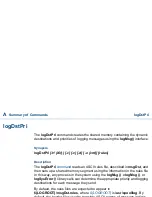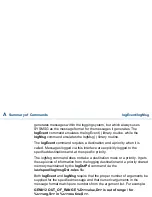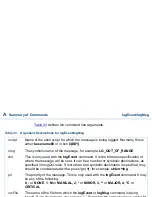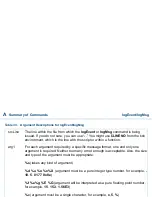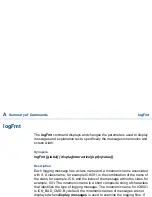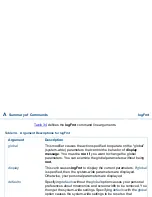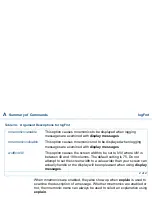
A
Summary of Commands
logCat
UCS 1000 R4.2 Administration 585-313-507
Issue 3 April 2000 514
logCat
The logCat command reads the compressed logging files and outputs
human readable messages.
Synopsis
logCat [-{t|b} lines] [-a locant] [-z locant] [-v] [-c] [-m] [-r root]
[-s locant] [-q locant] [-w width] [-p continuation-prefix]
[-d data -l log-prefix | file] [-f format] [-V]
Description
The
logCat
command
reads in a file of compressed logging messages
generated by
log
and expands them to a readable format.
The default action, with no arguments, is to list all log files of the type
specified first in the Config file. For example, logCat -d${LOGROOT}/data -
l{primary-log-prefix}. The options are as follows:
•
-t lines
— Tails the last “lines” of file.
•
-b lines
— Shows the beginning “lines” of file.
•
-v
— Specifies the verbose mode (that is, report the file names of the files
examined).
•
-c
— Continuously displays the last lines of file. If the logdaemon
switches to a new file, follow it.

